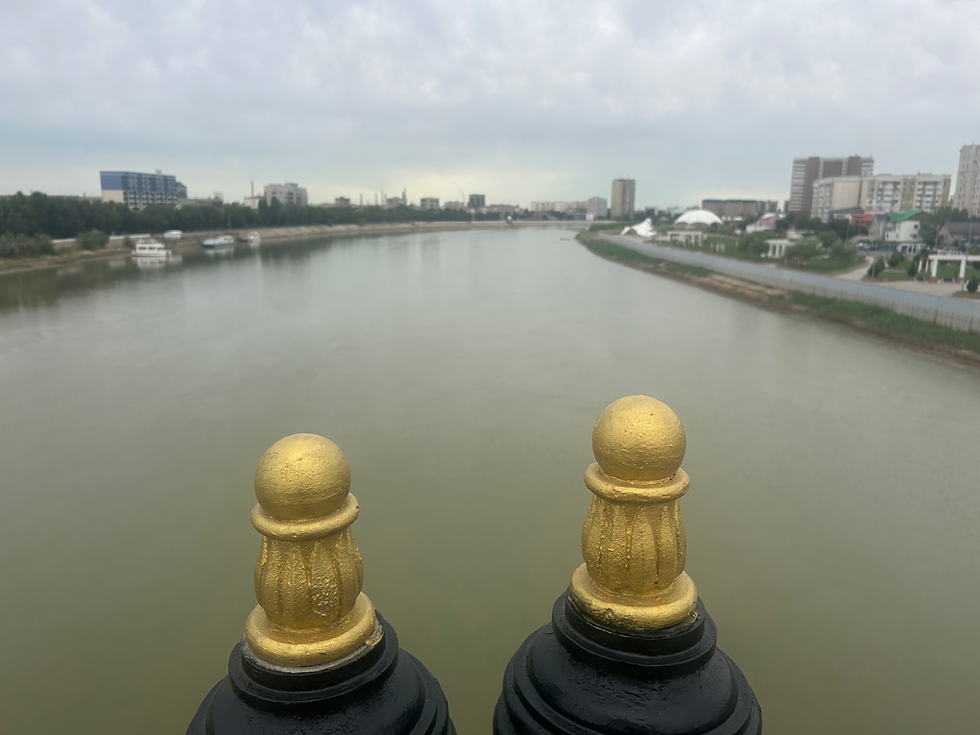Transnistria
- Wolfgang Fobo
- 12. Feb. 2020
- 3 Min. Lesezeit
Visiting Transnistria was one of my most urgent desires of places yet to be visited, and as soon I left my company for good, going into early retirement in spring of 2018, first thing I did is organizing a trip to this officially non-existing country. A "country" which, strictly speaking, would belong to Moldova, would there not be a local population (and the Russian Army) which is firmly against being a part of Moldova.

As its name implies, Transnistria is a slice of land that lies to the East of the Dnjestr River, which forms the (inofficial) border between Transnistria and Moldova. People over there are ethnic Russians, they want to belong to the Russian world, or at least they want to stay what they are, namely Russians, and not being assimilated into the Moldavian culture, which is not much different, if at all, to the Romanian one. That was the cause of the conflict, when in the early 1990s the newly formed Moldova, as an independent country emerging from a former Sowjet Republic, wanted to create a uniform Moldova - I guess the Romanian style and deny the Russians in Transnistria their culture.
This conflict is now frozen. Russia intervened with their Army and drove the Moldovan Army back over the Dnjestr River. And the local Transnistrians consider the Russian Army, or the Russian state in general, as their protector.

Anyhow, you can visit this non-country, as there is an official border crossing, and to my surprise I saw lots of Moldovan cars in Transnistria. Seems that business interests slowly have the upper hand. By the way, this non-country is member of a union of a total of 4 non-countries which claim to be independent, but are not recognized by the UN. The other 3 being South Ossetia (which does not want to belong to Georgia), same with Abkhazia, and Nagorno Karabakh, which - with strong Armenian support - refuses being a part of Aserbaidshan.
Ok, planning ahead I googled a local tour operator in Tiraspol (capital of Transnistria) who picked me up at Chisinau Airport, the capital of Moldova. For about 3 days I was shown what makes Transnistria, and I was made understood why they want to stay what they are (wrong, they dream of being annexed by Russia, but Russia seems not too keen taking them home, as there is no direct border with Russia, but there is one to Ukraine. For example, you can take a train from Chisinau to Odessa, passing through Transnistria.
Crossing the border - it was April 2018 - was a straightforward matter. No hassle whatsoever, as I was afraid from reading reports of earlier visitors. I had to fill in a sheet, and that was it. No border control on the Moldovan side, as from their point of view you do not leave their country.
My hotel in Tiraspol was quite ok - you have free WiFi, and I enjoyed a nice breakfast Russian style.

What immediately jumps into your eyes when in Transnistria are the many memorials commemorating war. Not only the 2nd World War - this you have everywhere in all countries of former Sowjet Union - but here in addition the civil war in 1990-1992, when fighting for their independence.

Transnistria will remind you the good old Sowjet times. They keep Lenin in high respect, and they still have a house of the Sowjets. This shall however not imply that Transnistria is governed the good old Sowjet style.

No, there is a man in Transnistria who seems to almost own Transnistria - at least he owns all supermarkets, petrol stations, and even the football team is named after him: Sheriff.

Sheriff is everywhere. Modern shops, and they have everything. But once you leave Tiraspol for the countryside, you see poverty everywhere. Except the churches, they all seem to be nicely renovated.




One day we made an excursion to an abandoned German settlement, named Glückstal (i.e. Happy Valley). All Germans were expelled during the Great War, and what was left is now in a museum, which is just a room underneath the primary school. I was greeted by the headmaster and was shown the museum room, with all remainders of German settlement.

I



I have to add, although to me it looked like a lot of poverty everywhere, people were eager, hard working, and well organized. I was under the impression that people were aware of their fate, but tried to get along with discipline. (what I did not dare to ask however is how many young people would like to leave their country for better times. There are ways that if you have Moldavian roots you can get a Moldavian passport, and then it is easier to get a visa for the EU.




Kommentare